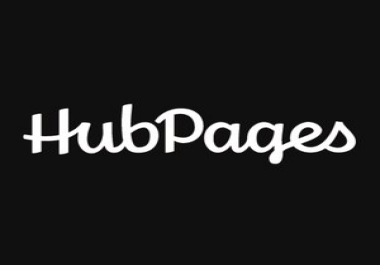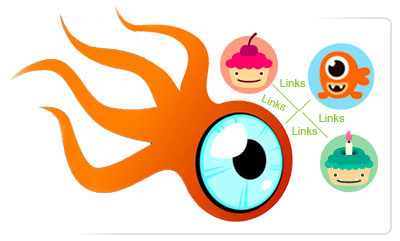Why haven't you known about these links sources in the recent past? You have. However you've most likely been let they know are a waste of time by your Web designer, who claims these huge, prevalent destinations aren't functional for Google optimization.

The excuse for why is that most powerhouse social media destinations like Facebook and Youtube put a minor bit of code called 'the no take after' tag into most territories of their site. As the name infers, the 'no follow' tells web crawlers: assuming that somebody tries to fabricate backlinks to their webpage from here, don't accompany it. Rather, overlook it.
This was and is carried out to avoid spammers. Provided that you didn't have the 'no-follow' tag, spammers might make many Facebook profiles, Linkedin profiles, and Youtube accounts just to link those locales again to their site. The 'no-follow' breaks the association you are attempting to make between one site and the following, crushing the motivation behind a link from the view of Google optimization(individuals container obviously still click the link and visit your site straightforwardly).
However it' s an error that all social media destinations have no-folow. Indeed, numerous destinations furnish delicious join chances. You recently need to find them. What's more we did.
These are all true connects, and are quite authentic and affirmed for streamlining by Google.
Google Plus

We recommend making profiles for key representatives and organizers. Make sure to include custom interfaces with stay content ("anchor text" is the genuine expressions that contain the Link. You need these to be scan terms for which you need to be discovered, not y
our name or organization name. This anchor text helps Google confirm what different locales consider) . Your profile connect on Google Profiles will be without a no – follow and you can include much extra data on top of the links incorporating films and photographs. These profiles are particularly essential now that Google Plus has started.
Google Places

Make a nearby professional resource for the sum of your business settings. Use target pivotal words in the profile and portrayal fields. This is an extraordinary source that is without no – accompanies and has high perceivability in the list items. A Powerful, simple, and adequate place to assemble backlinks.
Linkedin

Make an organization profile, and additionally distinct profiles for key workers and authors. Select "Other" when setting your first site link to make custom stay content. Additionally exploit the two extra joins accessible, however no custom anchor text is permitted.
Digg

Digg is incredible for movement era, keeping in mind not the powerhouse it once was, is still an extensive neighborhood. Also, you can submit articles you need to advertise, and links to those articles are emulated via web search tools.
Foursquare

Regardless of the possibility that you're not a check-in neurotic, you may as well set up Foursquare profiles, as the links you connect with your record is emulated.
Reddit

An article compliance site as like Digg. Exceptionally dynamic with greatly captivated clients. The links you submit will be without the no – follow characteristic .
Squidoo
Make as numerous Squidoo "lenses" as you like, about any subject. A lens commonly comprises of a blog entry esque article, with links to other prescribed sources.
Stumbleupon

An article finding site that is exceedingly occupied and famous. Drives critical eyeballs surrounding the Web. Submitted links are emulated.
Yelp

Regardless of the possibility that you don't know a burger from a baba ganoush, make a profile on Yelp. The backlink in your profile is accompanied. Interfaces in remarks, nonetheless, are no-follow.
Yahoo

This nearby business entrance permits you to make a profile for your business and is without the no – follow trait. Use target keywords in the profile and portrayal fields, and anchor text if conceivable.
Youtube

Make a custom Youtube channel for your organization . While remarks and any link you incorporate in your portrayal will have the rel="nofollow" quality, Youtube gives you a link in your profile that is without no – follow.
Ezine Articles

Article submission is turning into a spot dated as far as Google optimizstion and building backlinks. Vast content storehouses as this and Hubpages (beneath) may have been cheapened to a degree in Google's latest "Panda" redesign of its calculation. In any case you can utilize this website to reuse blog entries that you have distributed somewhere else, and grab an extra join.
Hubpages

Compose articles on themes of your picking, with custom joins and stay content . Critical links potential here. Downgraded a spot in Google's new Panda upgrade.
Dotpoch

Likewise in the Digg and Reddit classification. You get a link in your profile , and you can submit news stories and articles. All article links are emulated.
When You Build Backlinks Be Complete?
Concerning Google Places, Local Listings, Linkedin and fundamentally all your social pages and profiles, a complete profile is a great deal more influential than an inadequate one. It's just more data that web search tools can use to resolve what you and your site are about. So round out all the items and incorporate your primary pivotal words in those profiles for instance, 'we are a scene organization from Dallas having some expertise in expansive business and instructive foundation ventures').
The greater part of this takes a step back and snort work, however in the event that you do it Google will have a wealthier accumulation of destinations indicating back yours in consistent, powerful way.
Got a juicy link opportunity we missed? Put it in the comments and we will update this post..Happy blogging.!!
 Instructions:
Instructions:














.jpg)









